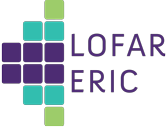Speaker
Description
Luminous and ultraluminous infrared galaxies (U)LIRGs offer unique laboratories to understand various physical processes which drive the evolution of galaxies across cosmic time.(U)LIRGs are the most extreme star-forming galaxies in the local Universe, and they are primarily triggered by interacting and mergers of gas-rich galaxies. As such, they provide excellent local laboratories to study in detail the physical processes that could be associated with the hierarchical transformation of star-forming galaxies into elliptical galaxies.
I will present the results of detailed spectral energy distribution (SED) modeling of 14 local ultra-luminous infrared galaxies (ULIRGs) with outstanding photometric data from the literature covering ultraviolet-far-infrared and radio bands (~50 MHz to ~30 GHz). We employ the CIGALE SED fitting code for ultraviolet to far-infrared and radio SED modeling. For radio-only SED modeling, we use the UltraNest package, leveraging its nested sampling algorithm. Combining results from our previous study on 11 LIRGs, we discuss the global astrophysical properties of a sample of 25 starburst galaxies (z<0.5). Their radio spectra are frequently characterized by bends and turnovers, with no indication of ULIRGs exhibiting more complicated SEDs than LIRGs despite showing more signs of interactions. Including radio measurements in CIGALE modeling constrained the dust luminosity and star formation rate (SFR) estimates by more than one order of magnitude better than previously reported for starburst galaxies. We show that total and nonthermal radio luminosity at 1.4 and 4.8 GHz frequencies can be good estimators of the recent SFR for all LIRGs and those ULIRGS with insignificant AGN influence. A weaker but still significant correlation is observed between radio SFR at 1.4 GHz and old (averaged over 100 Myr) SFR based on SED modeling, indicative of multiple episodes of starburst activity during their lifetime. The thermal radio luminosity at 4.8 GHz is a better tracer of recent star formation than the thermal luminosity at 1.4 GHz.

